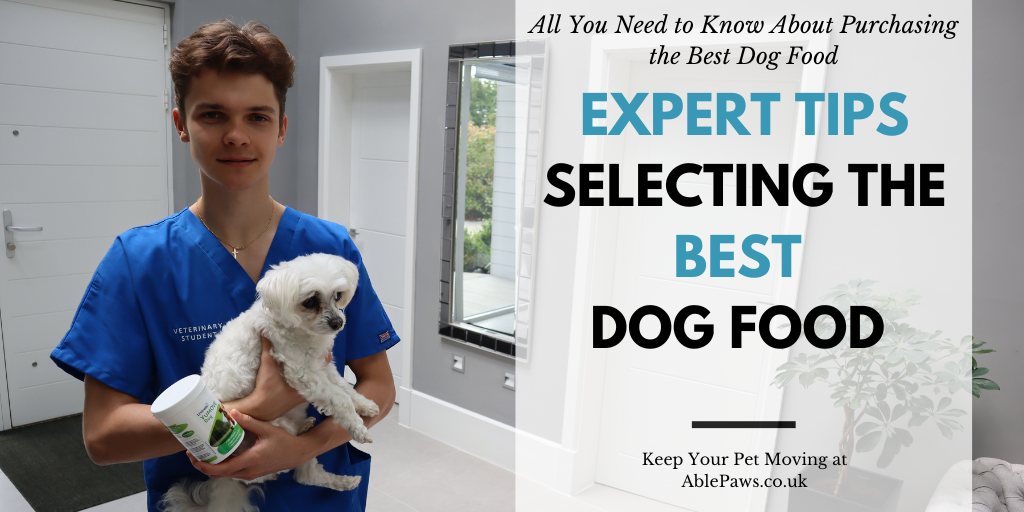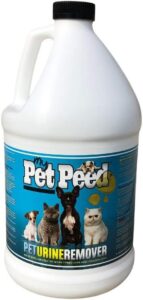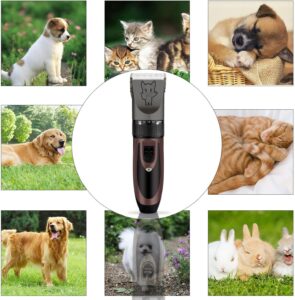In the quest for providing optimal care for your beloved furry friend, selecting the best pet food is a crucial decision. With so many options on the market, it can be overwhelming to determine what constitutes the ideal diet tailored specifically for your pet’s needs. Whether you are seeking nutrition for a growing puppy or a senior cat, understanding how to choose the right food for their age and breed is essential. In this article, we will explore the factors to consider and provide valuable insights to help you make an informed decision that promotes the health and well-being of your furry companion.

Understanding Your Pet’s Nutritional Needs
Just like humans, pets have unique nutritional needs that must be met in order for them to thrive. Understanding these needs is essential for providing your furry friend with a healthy and balanced diet. There are several factors to consider when determining your pet’s nutritional needs, including their age, breed, and activity level.
Determining Your Pet’s Age and Breed
The age and breed of your pet can play a significant role in their nutritional requirements. Puppies and kittens have different nutritional needs compared to adult and senior pets. Small breeds may have different needs than large or giant breeds. It’s important to take these factors into account when selecting the right food for your pet.
Consulting a Veterinarian
One of the best resources for understanding your pet’s nutritional needs is your veterinarian. They can provide valuable guidance and advice based on your pet’s specific requirements. They can help determine the appropriate type of food, amount to feed, and any dietary restrictions or special considerations your pet may have.
Considering Your Pet’s Activity Level
Your pet’s activity level is another important factor to consider when choosing the right food for them. Active pets, such as working dogs or highly energetic cats, may require a higher calorie diet to support their energy needs. On the other hand, less active pets may benefit from a lower calorie diet to prevent weight gain. Understanding your pet’s activity level can help ensure they receive the proper nutrition to support their lifestyle.
Reading Pet Food Labels
When shopping for pet food, reading and understanding the labels is crucial. Pet food labels provide valuable information about the ingredients, nutritional guarantees, and any artificial additives present in the product. By being able to interpret these labels, you can make informed decisions about the quality and suitability of the food for your pet.
Understanding the Ingredients List
The ingredients list on a pet food label gives you insight into what exactly is in the product. Ingredients are listed in descending order of weight, with the first few ingredients being the most prominent. Look for high-quality protein sources, such as meat or fish, as the primary ingredients. Avoid foods with excessive amounts of fillers, by-products, or artificial preservatives.
Identifying Nutritional Guarantees
Pet food labels often contain nutritional guarantees, which indicate the minimum or maximum levels of certain nutrients present in the food. These guarantees can help you assess if the food meets your pet’s specific nutritional needs. Look for guarantees related to protein, fat, fiber, and essential vitamins and minerals.
Avoiding Artificial Additives
Artificial additives, such as artificial flavors, colors, and preservatives, can be harmful to your pet’s health. When reading pet food labels, it’s important to look for products that are free from these artificial additives. Opting for natural and whole food ingredients can help ensure your pet is receiving a nutritionally balanced diet without unnecessary additives.
Different Types of Pet Food
Pet food comes in various forms, each with its own advantages and considerations. Understanding the different types of pet food will help you choose the best option for your furry friend.
Dry Food (Kibble)
Dry food, also known as kibble, is one of the most common types of pet food. It is convenient, has a longer shelf life, and can help maintain dental health by promoting chewing. Look for high-quality dry food that includes a good balance of protein, fats, and carbohydrates.
Wet Food (Canned)
Wet food, commonly referred to as canned food, is another popular option for pets. It typically contains higher moisture content compared to dry food, which can be beneficial for pets that don’t drink enough water. Wet food can be especially beneficial for pets prone to urinary tract issues or those with dental problems that make chewing difficult.
Raw Food (BARF Diet)
The raw food diet, also known as Biologically Appropriate Raw Food (BARF), consists of feeding pets raw meat, bones, fruits, and vegetables. Proponents of this diet believe that it closely mimics the diet of wild animals and is more natural for pets. However, it is essential to consult with a veterinarian before starting your pet on a raw food diet to ensure it meets their nutritional needs.
Homemade Food
Some pet owners opt to prepare homemade food for their pets. This can provide better control over the ingredients and allow for customization based on the pet’s specific needs. However, it’s crucial to ensure the homemade diet is nutritionally balanced and meets all of your pet’s requirements. Consult with a veterinarian or veterinary nutritionist to create a balanced homemade diet.
Selecting the Right Protein Source
Protein is a crucial component of your pet’s diet, as it provides essential amino acids for growth, repair, and overall health. When selecting pet food, consider the source of protein to ensure it meets your pet’s needs.
Meat-Based Proteins
Most pets thrive on diets that include meat-based proteins. Look for high-quality sources of protein, such as chicken, turkey, beef, or fish. These proteins are highly digestible and provide the necessary amino acids for your pet’s well-being.
Plant-Based Proteins
Some pet owners prefer to provide plant-based proteins to their pets, especially in cases where allergies or dietary restrictions may limit the animal’s ability to consume certain meats. Plant-based proteins, such as soy or pea protein, can be a suitable alternative. However, it’s important to ensure that the protein source is complete and provides all the essential amino acids required by your pet.

Opting for Good Carbohydrate Sources
Carbohydrates provide energy for your pet and can be an essential part of their diet. When selecting pet food, consider the carbohydrate sources to ensure they are suitable for your pet’s needs.
Grains
Grains, such as rice, oats, or barley, are common carbohydrate sources in pet food. They provide energy and fiber for digestive health. While some pets may have grain allergies or sensitivities, grains are generally well-tolerated and can be a valuable part of a balanced diet.
Vegetables
Vegetables, such as sweet potatoes, peas, or carrots, can also serve as carbohydrate sources in pet food. They offer a wide range of nutrients, including vitamins, minerals, and antioxidants. Vegetables can be particularly beneficial for pets with grain sensitivities or those who require a lower carbohydrate diet.
Considering Special Dietary Needs
Just like humans, pets can have special dietary needs or conditions that require specific attention. Understanding and addressing these needs is essential for maintaining your pet’s health and well-being.
Weight Management
Weight management is a common concern for pets, as obesity can lead to various health issues. If your pet needs to lose or gain weight, selecting the right food with appropriate calorie content and portion control is crucial. Consult with your veterinarian to determine the best approach for managing your pet’s weight.
Allergies
Food allergies are not uncommon in pets and can manifest through various symptoms, including skin irritations, gastrointestinal distress, or chronic ear infections. If your pet has food allergies, it’s important to identify and eliminate the allergen from their diet. Your veterinarian can help you determine the best course of action and guide you in selecting hypoallergenic or limited ingredient diets.
Digestive Sensitivities
Some pets may have sensitive stomachs or digestive issues that require special consideration in their diet. Common signs of digestive sensitivities include vomiting, diarrhea, gas, or bloating. In these cases, choosing easily digestible foods with limited ingredients can help alleviate these symptoms and improve your pet’s digestion.
Medical Conditions
Pets with specific medical conditions, such as kidney disease, diabetes, or gastrointestinal disorders, often require tailored diets to manage their conditions effectively. These diets may be prescribed by a veterinarian or veterinary nutritionist and should be strictly followed to ensure optimal health for your pet.
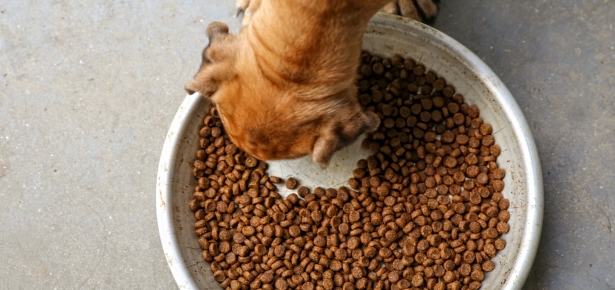
Checking for Quality and Safety
Ensuring the quality and safety of the pet food you choose is essential for the well-being of your furry friend. Here are some factors to consider when evaluating the quality and safety of pet food brands.
Researching Pet Food Brands
Take the time to research different pet food brands and their reputation in the industry. Look for brands that have a history of producing high-quality, nutritionally balanced products. Reading reviews and consulting with your veterinarian can help guide you in selecting reliable brands.
Looking for Quality Certifications
Quality certifications, such as the Association of American Feed Control Officials (AAFCO) or Global Animal Partnership (GAP) certification, can provide reassurance that the pet food meets certain industry standards. Look for these certifications on the packaging to ensure the product has undergone rigorous quality checks.
Verifying the Manufacturer’s Reputation
In addition to researching the brand, it’s important to verify the reputation and manufacturing practices of the actual manufacturer. Look for manufacturers that follow good manufacturing processes (GMP) and have a track record of product safety.
Checking for Recalls
Stay updated on any pet food recalls to ensure the products you choose are safe. Recalls are typically announced by the manufacturer or the Food and Drug Administration (FDA). Regularly check these sources or sign up for recall alerts to stay informed and take appropriate action if necessary.
Cost Considerations
While the quality and safety of pet food are paramount, it’s also important to consider your budget. Balancing your pet’s nutritional needs with your financial resources is crucial for selecting the right food.
Balancing Budget and Quality
Try to find a balance between your budget and the quality of the pet food you choose. Keep in mind that investing in high-quality food can potentially save you money in the long run by promoting your pet’s overall health and potentially preventing costly veterinary bills down the line.
Evaluating Cost-Effective Options
Consider looking for cost-effective options such as larger-sized bags or bulk purchases that offer better value for money. Some brands also offer loyalty programs or discounts that can help reduce the cost. However, ensure that the cost-effective options still meet your pet’s nutritional needs and do not compromise their health.
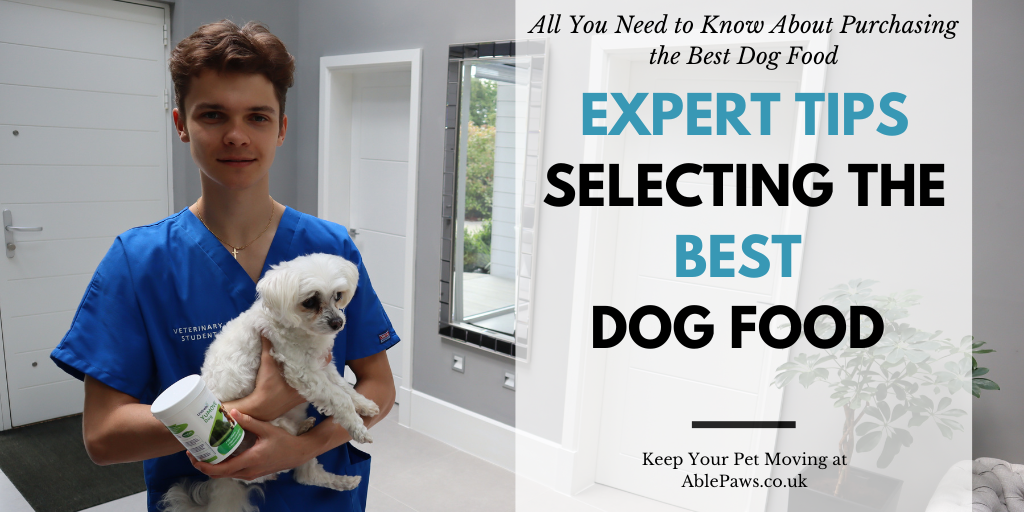
Transitioning to a New Diet
If you decide to switch your pet’s food or introduce a new diet, it’s important to do so gradually to minimize any digestive upset.
Slow and Gradual Transition
When transitioning to a new diet, start by mixing a small amount of the new food with your pet’s current food. Gradually increase the proportion of the new food over several days or weeks until your pet is solely on the new diet. This gradual transition allows their digestive system to adjust and reduces the likelihood of digestive problems.
Monitoring Your Pet’s Response
During the transition and after your pet has fully transitioned to the new diet, closely monitor their response. Watch for any changes in their appetite, stool consistency, coat condition, or overall energy levels. If you notice any adverse reactions or concerns, consult with your veterinarian for guidance.
Conclusion and Final Tips
When it comes to choosing the best pet food for your furry friend, understanding their nutritional needs is crucial. Taking into consideration factors such as age, breed, activity level, and special dietary requirements can help you make an informed decision.
Remember to consult with your veterinarian for guidance, as they can provide valuable insight into your pet’s specific needs and recommend suitable dietary options. Regularly reevaluate your choice of pet food to ensure it continues to meet your pet’s evolving needs as they age.
By reading pet food labels, selecting the right protein and carbohydrate sources, considering special dietary needs, and checking for quality and safety, you can ensure that you are providing your beloved pet with a nutritionally balanced diet that promotes their overall health and happiness.
